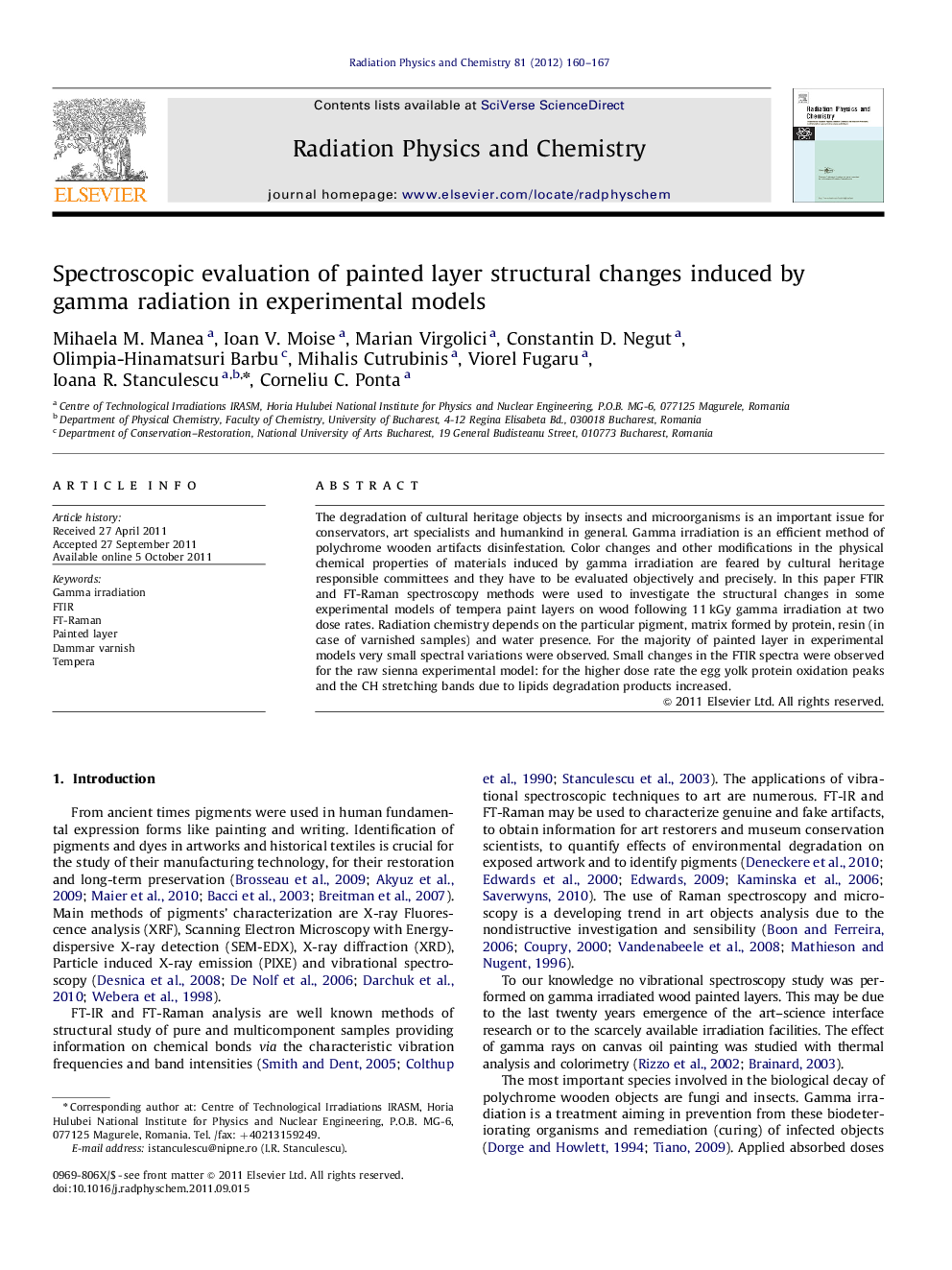| Article ID | Journal | Published Year | Pages | File Type |
|---|---|---|---|---|
| 1886436 | Radiation Physics and Chemistry | 2012 | 8 Pages |
The degradation of cultural heritage objects by insects and microorganisms is an important issue for conservators, art specialists and humankind in general. Gamma irradiation is an efficient method of polychrome wooden artifacts disinfestation. Color changes and other modifications in the physical chemical properties of materials induced by gamma irradiation are feared by cultural heritage responsible committees and they have to be evaluated objectively and precisely. In this paper FTIR and FT-Raman spectroscopy methods were used to investigate the structural changes in some experimental models of tempera paint layers on wood following 11 kGy gamma irradiation at two dose rates. Radiation chemistry depends on the particular pigment, matrix formed by protein, resin (in case of varnished samples) and water presence. For the majority of painted layer in experimental models very small spectral variations were observed. Small changes in the FTIR spectra were observed for the raw sienna experimental model: for the higher dose rate the egg yolk protein oxidation peaks and the CH stretching bands due to lipids degradation products increased.
► Experimental models of tempera paint layers on wood were γ-irradiated at two dose rates. ► Changes induced by γ-irradiation were evaluated by vibrational spectroscopy. ► Minor spectral variations of painted layer were observed. ► Raw sienna FTIR spectra showed little changes of egg yolk and lipids at higher dose rate. ► Gamma irradiation is recommended for disinfection of painted wooden artifacts.
